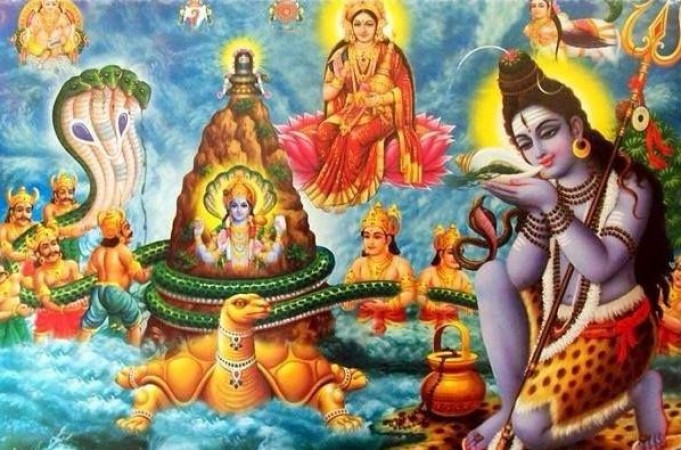
Sawan, also known as Shravan, is a revered month in the Hindu calendar that holds immense significance in Hindu mythology and culture. This sacred time, often associated with Lord Shiva, is marked by various rituals and observances performed by millions of devotees. In this article, we will tell you about the mythological stories related to the month of Sawan...
Lord Shiva and Sawan:-
Sawan month is closely intertwined with Lord Shiva, one of the principal deities in Hinduism. According to ancient scriptures, it is believed that during this month, Lord Shiva performed the celestial dance known as the "Tandava" to bring harmony and balance to the universe. Devotees consider this period as an opportune time to connect with the divine and seek Lord Shiva's blessings for spiritual growth, inner transformation, and the fulfillment of their desires.
The Legend of Churning the Ocean:-
One of the prominent mythological events associated with the Sawan month is the churning of the cosmic ocean, known as the "Samudra Manthan." As per the scriptures, the gods (devas) and demons (asuras) united to churn the ocean to extract the elixir of immortality, called "Amrit." During this process, various divine beings and celestial objects emerged, including Kamadhenu, the wish-fulfilling divine cow, and the sacred tree Kalpavriksha. This captivating legend symbolizes the eternal struggle between good and evil and the quest for spiritual enlightenment.
The Auspicious Symbolism of Kanwariyas:-
A notable feature of the Sawan month is the pilgrimage of Kanwariyas, devoted followers who undertake the Kanwar Yatra. Kanwariyas embark on a rigorous journey to sacred rivers, primarily the Ganges, to collect water that is then offered to Lord Shiva in their local temples. These devotees carry decorated pots, known as "Kanwars," on their shoulders and travel long distances, chanting hymns and seeking blessings along the way. The Kanwar Yatra represents the ardent devotion, discipline, and sacrifice displayed by devotees in their quest for spiritual enlightenment and divine grace.
The Blissful Dance of Nataraja:-
In Hindu mythology, Lord Shiva is often depicted as Nataraja, the cosmic dancer. The mesmerizing dance of Lord Nataraja symbolizes the rhythmic cycle of creation, preservation, and dissolution. It represents the interplay of cosmic energies and the continuous flow of existence. Devotees believe that during the Sawan month, Lord Shiva's divine dance reaches its peak, showering blessings upon those who witness and connect with this celestial performance.
The Significance of Fasting and Devotion:-
Observing fasts during the Sawan month is a common practice among devotees seeking spiritual elevation. Many devotees undertake rigorous fasting, abstaining from certain foods or consuming only specific meals. Fasting is believed to purify the body and mind, fostering self-discipline, and creating a conducive environment for spiritual practices. Devotees engage in prayer, meditation, and the chanting of mantras, immersing themselves in the divine vibrations of Lord Shiva.
Festivals Celebrated During Sawan:-
The Sawan month is also marked by vibrant festivals that celebrate the divine connection and express devotion to Lord Shiva. One such festival is "Sawan Shivaratri," a night dedicated to Lord Shiva, celebrated with fervor and reverence. Devotees offer prayers, perform rituals, and engage in bhajans (devotional songs) throughout the night, seeking blessings and enlightenment.
Who is Amogh Lila Das, a monk turned engineer, and why has Iskcon forbidden him?
Indian Rivers: India's only male river, which is also revered by people of other religions
The Significance of the Swastika: A Sacred Symbol in Hinduism